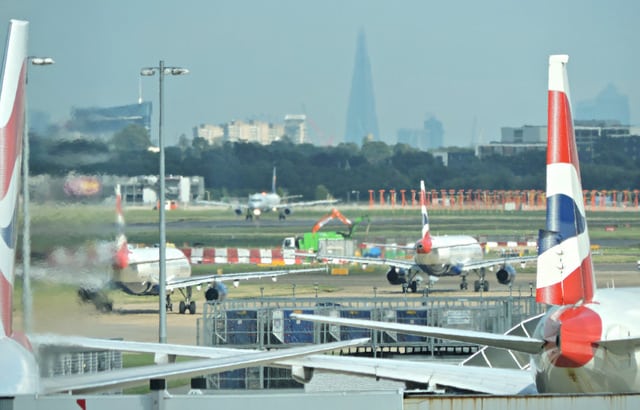Latest News

The Shard and other London skyline landmarks such as One Canada Square at Canary Wharf are visible from Heathrow Airport’s Terminal 5 on a clear day. Photo: Thomas Nugent
Inmarsat has signed a major contract with the European Space Agency (ESA) to develop satellite communication services that enable 4D trajectory air traffic management in European airspace. The Iris program supports the Single European Skies ATM Research (SESAR) masterplan for next-generation air traffic management, which offers a strategic perspective of the critical developments that are required to deliver a high-performing aviation management system for Europe.
According to ESA, Iris will provide secure and high bandwidth cockpit communications that are essential to accomplish SESAR’s objectives to optimize airspace, enhance safety and cybersecurity, and reduce flight times, delays and carbon dioxide emissions. Powered by Inmarsat’s new SwiftBroadband-Safety platform, Iris’ enhanced IP-based capabilities will relieve pressure on currently crowded Very High Frequency (VHF) radio links, which are near capacity.
Iris will enable the SESAR key concept of initial 4D trajectories, pinpointing an aircraft in four dimensions: latitude, longitude, altitude, and time. This will enable precise tracking of flights and more efficient management of traffic through Trajectory-Based Operations (TBO). TBO allows pilots and controllers to calculate the shortest available routes, cruise at optimum altitudes, and use continuous climb and descent paths, saving fuel and lessening the environmental impact of air travel.
Pilot-controller communications will move from voice communications to data link (that is, text messages), increasing both operational safety and efficiency. Iris will also protect aircraft communications from cyber threats with security gateways. These gateways would provide a Virtual Private Network (VPN) barrier between the ground and each aircraft, assuring mutual authentication and integrity of data exchange. They will securely connect flight management systems on board the aircraft to the corresponding systems used by air traffic controllers on the ground.
Inmarsat and ESA will now work with prime partners Thales Alenia Space and CGI, in addition to a consortium of aviation and space companies, to finalize the technology before commercial rollout commences in Europe from 2020.
The program will also demonstrate how satellite data link will evolve to become a primary means of communications for air traffic control, ESA stated.
“Iris is also fundamental to the future of European aviation and the economic growth of Europe. The International Air Transport Association (IATA) forecasts that European passenger numbers to grow to 1.5 billion by 2036, but already Europe’s aviation industry is under intense pressure due to limited airspace capacity, which results in several billions of dollars of unnecessary cost to airspace users each year. The advanced capabilities of Iris will mark a step change, helping to address the limitations of today’s legacy protocols and paving the way for more efficient, cost effective air traffic management,” said Inmarsat Chief Executive Officer (CEO) Rupert Pearce.
Get the latest Via Satellite news!
Subscribe Now